

The Deans List is an interview series with the leaders of architecture schools, worldwide. The series profiles the school’s programming, as defined by the head honcho – giving an invaluable perspective into the institution’s unique curriculum, faculty and academic environment.
For this issue, we spoke with Mark Wigley, former Dean of Columbia University's Graduate School of Architecture, Planning and Preservation in New York City.
During his ten years as dean, Mark Wigley has fortified GSAPP's global reputation for criticality and experimentation by extending the school's presence to cities all over the world. After inheriting the deanship from Bernard Tschumi, Wigley initiated GSAPP’s Studio-X outposts in Asia, Africa, South America and the Middle East, while strengthening the school’s invaluable relationship to its home city of New York during the Bloomberg era. After starting the position in 2004, Wigley has seen the nature of architecture education become more complex, not only institutionally, but urbanistically as well, as the relationships between universities and cities become more crucially impactful. Schools and cities must learn to collaborate, both for their mutual benefit and the ultimate happiness of their inhabitants.
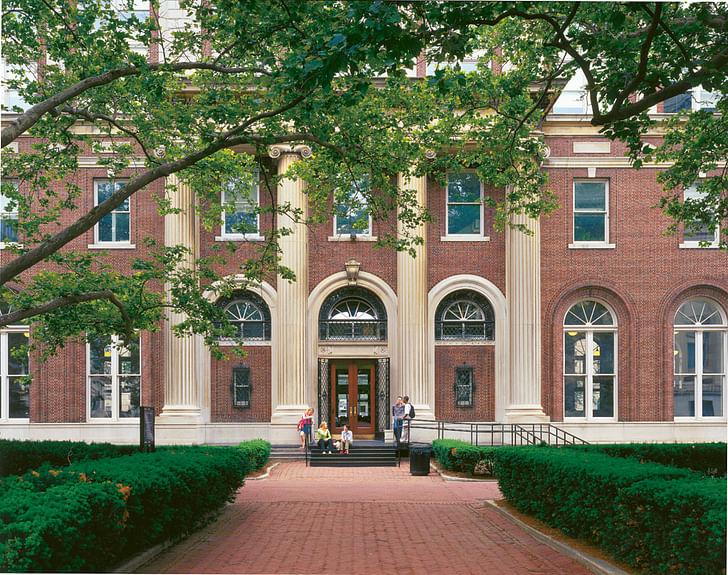
Wigley left the dean’s post this past June, and will return to Columbia as a faculty member after taking a sabbatical in Los Angeles and Berlin. During our interview for Deans List, Wigley reflected on university’s responsibility to both protect and incubate learning, under the assumption that students should always turn out smarter than their teachers. Our featured interview transcript has been slightly condensed, and includes extra audio snippets that extend beyond the normal Deans List topics.
Briefly, what is your own pedagogical stance on architecture education? How would you characterize your architecture school’s programming?
Since the school was founded in 1881, it has always been understood as an experimental laboratory. The concern here isn’t so much with best practices of today, as with possible best practices of the future, which means it’s a professional school whose main interest is in incubating new forms of professional. Of course the best practices of today are crucial, but a student coming to Columbia would not be happy with the state-of-the-art. What they want is the capacity to participate in future states-of-the-art. This attitude organizes the kind of teacher that’s here, the kind of teaching and the kind of student that comes, so it’s an incredible collaborative work between teacher and student to think the future of the discipline, the future of our expertise and of knowledge itself. So in this sense, the entire school operates as an incubator, and an accelerator. And since it’s also a professional school, this means “training” slides very quickly into experimentation, and I would say the secret of the school is that the training never ends and the experimentation starts right away. People that feel themselves to be at the very beginning suddenly find that they’re right there at the leading edge. And precisely because they didn’t expect to be at the leading edge, they contribute brilliantly. This is much more a school of questions than a school of answers. We have sister schools that can give the answers, and if you want answers they’re really great.
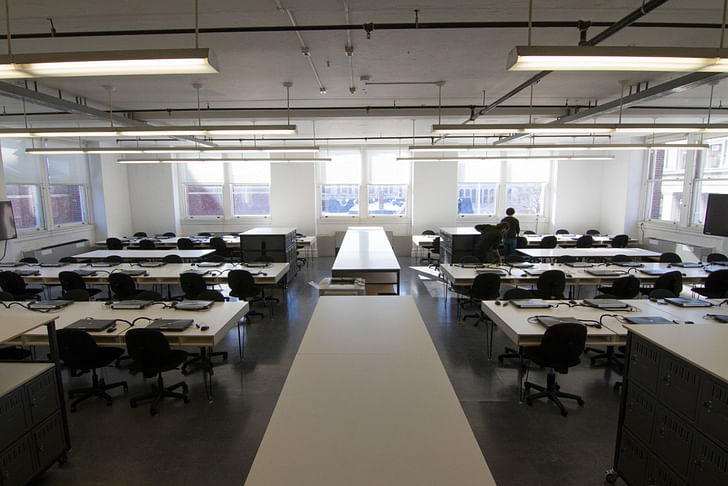
What kind of student do you think would flourish at your school, and why?
The students are coming from more than 60 different countries and all of them are completely crazy in the sense that they would rather connect to the unknown than receive the known. So basically they’re thirsty for what might happen five, six, seven years from now. This is a very different kind of student. They are realists, they want to be practical, ethical, responsible, and so on, but they also don’t want to be followers. They want to innovate. So the personality they have is an incredible curiosity. It's very romantic because have chosen a student coming to Columbia would not be happy with the state-of-the-art. What they want is the capacity to participate in future states-of-the-artto come to the school because it’s a laboratory, and in a laboratory by definition you can’t be sure what can happen, you don’t want to be sure. So I would say it’s really like a micro-version of New York -- this is the great immigrant city, the city for people of changing direction and changing speed. And the amazing thing about immigrants (and I am one of course), is that you already think other people are doing more interesting things than you. So when you join them, you try to do what you think they’re doing, and of course the secret is, they’re not doing more interesting things than you and you yourself invent the exciting thing. So in the same way, the GSAPP is like a microcosm of New York full of these immigrant voices, all of whom are a little bit nervous, little bit romantic, they don’t know what’s going to happen next, so they speculate, they throw something into the room in the hope that they will be loved. And of course, to their amazement, people are thrilled with what they offer, and they become immediately leaders. So in this sense I’d say the students are maybe a little bit more nomadic and adventurous and they want to be surrounded by other people also moving in different directions.
It’s completely New York, in that sense. It's high-energy, high-octane. Each person as an individual is actually tender, modest, thoughtful, unbelievably ethical and so on, but you put them all together and you have a kind of nuclear reactor, of extraordinary energy. That means things have an intensity and a speed and a multiplicity you won't find anywhere else. If you’re an architecture student and you’re wondering which studio to do, you’re choosing from twenty different studios each semester, twenty different philosophies are available to you, and you chose your previous studio from a different twenty, so there's an incredible density of parallel experiments.
A university is a stupidity reduction machine. So it’s not so much that you’re trying to tell the students what their future is, quite the opposite. What you’re trying to do is help remove as many forms of stupidity as possible, so that the students are on the highest possible platform when they act in the world. And of course having a great library, with all of the best thoughts gathered there, produces a sense of responsibility. You simply don’t want to say something stupid because that would be like putting a stain on the library. So every student is adventurous and yet dreams that their work, their thoughts, drawings, designs, plans, preservations, paintings, and models would be eventually in the library. So this is a very very tender relationship to the library. It’s an amazing thing. Having the world’s reference library for architecture here inspires us all.
I think that the really astonishing gift of the architect is to think in situations in which it’s not even clear what the question is. In fact, that’s the normal space for an architect to work, where people don’t understand, when they can’t even describe the nature of the problem. If you could say what the problem is, you wouldn’t hire an architect. You’d hire an engineer, somebody with a toolbox. You call an architect in when you have a very complex situation in which you have a lot of information that doesn’t really connect, and the architect just goes in there and sees or projects or imagines a possible form of organization that allows that complexity to continue. So I think the great virtue of the architect is to the ability to consider the most complex ecologies, the ability to be able to embrace everything. There’s a kind of hospitality to architecture, to let all of the complexity come in. And naïveté is crucial A university is a stupidity reduction machine.there, because to know that you don’t know, to have a sense that you don’t know and to be therefore to be in awe of what you are experiencing and full of love and respect for complexity, this I think is the genius of architects and why I think they have an enormously important role in society.
What are the biggest challenges, academically and professionally, facing your students?
I think that by the year 2050, about 80% of the planet will be living in cities, and nobody knows what that means, so we have about maybe fifteen to twenty years to try to understand that. We know more about what it is to live on Mars than what it is to live on Earth. So cities have become the biggest experiment in human history, and over the next couple of decades there’s going to be an urgent need to try and understand the emergence of this new kind of city, which is also the emergency of a new kind of human being, a new kind of social life. I think the biggest challenge facing our graduating students is the sheer scale or the questions they’re going to be asked to participate in. I think of course the financial burdens will be great, but in a certain sense when people decide to become architects, that’s what I mean by crazy -- they make a crazy, crazy decision to go for the uncertainties, the ideas, rather than the certainties. I think there will be financial challenges but the intellectual challenge will be what it was that brought these architects into the field in the first place. I think almost every graduating student would rather have intoxicating intellectual challenges than have a salary similar to that of a doctor or a lawyer without such challenges.
The lifeblood of the architect is a difficult question, to which they don’t provide an answer, but they provide a whole new definition of what the problem is, a new context for thinking and living. An architect isn’t someone who gives the client what the client asks for, an architect is someone who gives the client something other than what the client asks for, but something that the client then imagines that they should have asked for, or even pretends that they did ask for. So for the graduating student, the question is: how can they give the world not what the world is asking for, but what the world will, after they have done their work, wished that it had asked for and even pretend that it did. From a straightforward professional view, the graduates of this school do incredibly well in terms of finding jobs and finding their paths in society. But the big question, the big challenge is, how will all the graduating students from all the different schools, together, collaboratively help elevate the aspirations of our shared society.

I think the service-model of architecture is about to go through a revolution. So rather than say to my students: “you should be really really worried about which place you will occupy in the current structure, that will someway help you to deal with student loans and all of that, the question is much more: In which way has the work you’ve been doing with us going to evolve into a new way of being an architect, in which you will be appropriately compensated for your extraordinary abilities. We are trying as much as possible to create those thoughts inside the school. I find the model of the architectural office as a slave ship, totally uninteresting and no longer does it match the way that ideas are generated and circulated. There will be the financial equivalent of Archinect in my opinion, and that will be a beautiful space for multi-dimensional practice. We must be within a few years of this.
Which is why I think open-source and distributed intelligence is not even controversial -- this will be the way in which architecture will play its role in our society -- and so the question is the GSAPP is like a microcosm of New York full of these immigrant voices, all of whom are a little bit nervous, little bit romantic, they don’t know what’s going to happen next, so they speculatehow, on the inside of a school, do you help incubate and accelerate this transition. The students that we’ve been describing, the crazy, romantic, brilliant, imaginations that come here to Columbia have in the past used the artist’s model, focused on the ideas rather than personal sustenance, but inside the school, being naive about money is no longer considered an acceptable character trait for an architect. So for example, there’s a real estate development program in the school, and almost all the students participate very vigorously with it. There is the feeling that if the young architect wants to reposition architecture and professional compensation and all of that in the built environment, you really need to understand very well the current situation and the current motivations of speculative capital and so on. More and more of our graduates, for example, now say to their clients that they would rather have a piece of the profit of the building then a standard fee. To do this you need to understand very very well what the real estate developer is thinking and how they think, so you might as well collaborate with that form of intelligence already within the school.
In reverse, the real estate development students treat design itself as a crucial asset for them. So I think what’s happening inside the school right now is, you very rarely find an experimental architectural studio, class or program, that doesn’t have some kind of new concept of architecture’s relationship to capital, including highly critical relationships, as part of the basic experiment. And if a student doesn’t hear that engagement with real world conditions when the teacher presents, the student isn’t likely to go for it. This is why I have such confidence in this next generation, I just think they’re not going to wait for us to come up with better options, they’re really going to do it for themselves in real time.
Because most students now like to do two degrees rather than one. People like to mix and match, combining, for example, preservation and real estate development, the two traditional mortal enemies. It used to be a celebrity death match between historic preservation and real estate development. Now you have joint students that think, hey, there’s no such thing as development without preservation, and no such thing as preservation without development, so I can imagine new paradigms, new forms of intelligence. It’s a real pleasure as dean to see every day here the emergence of new forms, new species. Sometimes it’s like the movie Alien -- the alien suddenly pops up where you least expect it, looks left and right and then scurries out into the world, and it’s very, very exciting. I feel enormously lucky to have been with these very creative and progressive people in this moment for these two or three or four or five years that they spend here.
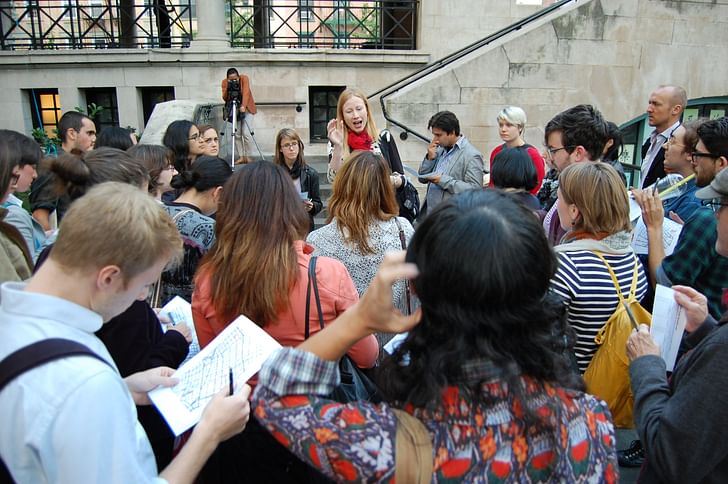
How do you provide for employment after graduation? How do you familiarize yourself with trends within the architectural profession/academia, and adapt these observations into programming and student policy?
I think it is crucial for the lines between the inside and outside of the school be blurred with a lot of continuous exchange. Employment and teaching are linked through this exchange. I think a really good school of architecture should not just be a place that thinks intelligently about cities, but should itself be a little city. So if cities are the most burning question, for any school of architecture but also for any university, cities are also the single-best invention of the human species, and cities themselves are beautiful because they use the collective capacity of people to generate ideas. Cities are the beginning of social media. Cities magnify connectivity. Of course social media itself today has magnified urbanity like we’ve never seen before. So in this sense, a school of architecture should be modeled as a kind of miniature city, which means a kind of social network of a certain dimension, where you multiply the interconnections.
So if I were to make it some sort of capsule description of GSAPP, it would point to the fact that it has more parallel experiments that are interconnected than anywhere else on the planet. I mean it has an extraordinary experimental capacity, but that doesn’t mean people are walking around with lab coats and a serious look on their face. It means incredible, constant, dynamic exchange. So the way I translate the issue, how do we address cities, is to actually try to urbanize the school itself. This is also why we have the Studio X network. When the research university was invented, it introduced the great technology of the laboratory, a place where you do highly crazy and experimental things. The things that work then get moved into the world. But the world now is more experimental than any laboratory. Cities are doing things that are crazier than could be proposed by any architecture student. So we have to take our studios and put them out into the world.
The secret of the school is that the training never ends and the experimentation starts right away.I think the first gesture was, and this was the great invention of my predecessor Bernard Tschumi, to really make this school a microcosm of New York as a kind of vibrant innovation hub. And maybe, part of what I was trying to go further, by not just making the school like a city but actually putting the school into the city itself. Not as a missionary outpost, not to expand the school, but actually to create the idea of the school itself as a form of distributed intelligence. In other words, to suggest that networks are the way things could operate. I think schools have to be understood as forms of distributed intelligence. So it’s not the teacher to student message that is the most important, but student to student, teacher to teacher, school to school, city to city, planet to planet. And the fact that the technologies of research, of representation, of design, fabrication, construction, of maintenance, of monitoring, of surveillance and analysis, are all now talking to each other, and literally passing through our cell phones, means for the first time that the model of architecture as distributed intelligence is not just fantasy, but a reality of contemporary society. So I think we are, as architecture schools, very uniquely positioned to activate a new generation of expertise.
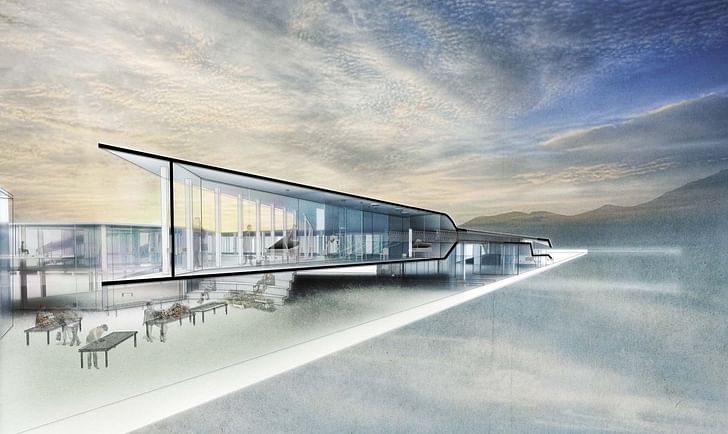
Do you collaborate with other departments or schools when designing programming?
The leading school of Public Health is here at Columbia, and we work very closely with them. The argument would be, if you’re really serious about cities, as we are, in the end what you're talking about is health. If you use the word health, it covers every aspect of what we’re trying to do. But the reverse is also true, if you’re really obsessed about health, in the end what you are talking about is cities. We’re are really joined at the hip with the School of Public Health and we do work all over the world with them, and we try to imagine what are the connections and relationships. Something very similar happens with journalism, with international public affairs and so on, with engineering of course, but I think this one with public health is genuinely exciting. Again, if you think about it: how could it be otherwise? How could we allow those two fields to drift apart?
Just yesterday for example we spent a day in Studio X downtown, with half of the speakers coming from Architecture and half coming from Public Health, with the leader of the World Health Organization on all the global initiatives towards healthy cities. All of us working together trying to imagine how we could contribute to that effort. Let’s say on the one side. Or we are together in the favela of Rio das Pedras, trying to see how a combination of architecture, engineering and public health could make a substantial contribution to the evolution of that vibrant neighborhood. The feeling that’s emerging now is, how can you possibly talk about a serious question about cities without talking about public health?
So I think architecture schools are about to go through quite a transformation. They are obsessed with cities, but cities are no longer simply the mandate of a school of architecture. They are now the mandate of a whole university. Which corner of a research university isn’t obsessed with cities? Our role has changed. I think we’ve gone from housing expertise about cities to being a kind of host of a university-wide conversation about cities. And of course we have a lot of knowledge so we’re good hosts, and we’re right now facilitating a kind of blurring of the outer boundaries of the university, but I think very soon universities will self-identify as think-tanks about the futures of cities. And of course that’s a global question, and the idea of a university in one place, that’s gone. Universities have to turn themselves inside-out. Which is why our school turned itself inside-out in having these key Studio X’s around the world, not as extensions of the school but as the very heart of the school. We basically ripped the heart out of the school and put it in the real laboratories around the world. And it’s been a huge transformation of our ability to think, work, teach, learn … Even those of us incubating this project have been shocked at how beautiful is the result.

What is the relationship between the school and local government?
Quite a lot, but interestingly, even more in Rio, Istanbul, Beijing and so on. It’s very interesting that actually, outside of New York there are more direct relationships between our school and government, in addition to NGOs, activists etc. In New York, a very large proportion of local government was trained here at the school. So people who are working in design, planning, art, culture, construction, and so on, many of them are part of the community of Columbia. So famously always there has been a constant relationship between the school and experiments in the city, and the city itself is the school’s main laboratory. But in recent years, we tend to be working more closely with the mayors, for example, of more distant cities like Rio de Janeiro. Something in what you’re asking is triggering a kind of insight for me, because a lot of architecture is ultimately related to questions of policy. And yet policy itself is not treated as something exciting within an architecture school, and I think that’s also one of the things that really needs to be challenged.
When you speak to an experienced architect who is running a very large, successful practice that has projects around the world and so on, when you talk to her about how her practice works, you discover incredible wisdom about policy, an ability to interact with policy making and enacting all around the world in very different situations. But I think inside schools, we are not that great at communicating that kind of knowledge, so I think in a way your question is more like a challenge, in a sense that I think we should spend more time collaborating with local governments not simply to make better decisions about what should happen in the cities where our schools are, but to help our students become, as it were, empowered in dialogue with people who enact policy. We’re always doing projects in New York, in collaboration with local government and NGOs and communities and so on, but more importantly from those other lessons in other cities, we can see how the architect can be inserted into so many other conversations, in a way that’s positive for everybody else. I think the idea of an architecture school that sits in one city, and uses one city as its reference point, even if that city is a global one like New York, I think that’s completely inadequate. Given the amount of investment in time and money that students make to a school, and affection and emotion, it has to be that the school someway helps them engage with globalization in all of its complexity.
There really isn’t an act by an architect that is divorced from the complexity of globalization, usually in multiple ways. So we really do need to reinvent schools of architecture. I think the idea of local practice has become a contradiction in terms. And this does not mean that every building is sort of the same everywhere, which some people think globalization means, but quite the opposite: everywhere is radically different. Radically different, in ways that we don’t fully understand, and we need to understand in order to have something to offer.
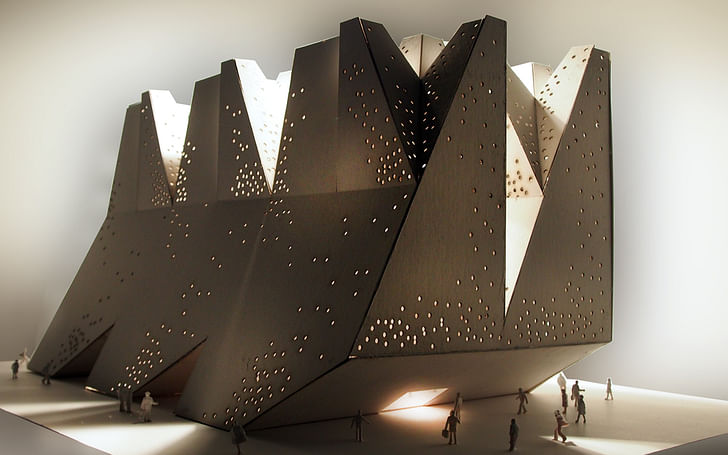
I understand that you’re leaving Columbia at the end of this semester; what do you plan to do afterward?
Well I’m not leaving Columbia. I like to think of it as stepping up from being the Dean to being a human being. So my next project is to return to being a human being and to be a writer and a teacher again. So I’ll take a year off in Berlin and Los Angeles, but then come back. I generally don’t like people that love their schools obsessively, that’s a bore, but I actually do love this one so I’ll come back here.
I think the great virtue of the architect is to the ability to consider the most complex ecologies, the ability to be able to embrace everything.In the time you have been in this role at Columbia, how have you seen things change? What are you most proud of, having changed?
Going in reverse, I really think the school should change and I don’t want it to cling to any of the things that I’ve done. In other words, I think experimental schools should experiment with deans in order to evolve. So when I started I told myself I will do ten years, no more. It’s a project, not a lifestyle. Maybe it's even a kind of lack of lifestyle. So I think a fresh school should quickly emerge. If I’ve done my job well, the school will suddenly get much better. I mean this not in a self-deprecating sense, quite the opposite. If I’ve created an agile and robust platform, the new dean will easily be able to layer onto it new experiences and ambitions, which was my experience when I was fortunate enough to inherit the school from Bernard. He had done such a beautiful job that I could then help the place change enormously.
Getting back to what has changed: mainly the mission was to take the idea of the experimental studio in the architecture program, and make that the paradigm for the entire school. So in other words, not just think of a studio as a collaborative, experimental space, but also the history and theory classes, technology classes, and professional practice, and equally also the urban design, urban planning, historic preservation, and PhD programs -- turning the entire school into a single incredibly dense, high-capacity brain operating with the collaborative and explorative mentality of studio. So turning the whole place into one laboratory for both training and research. That was main goal of the first five years, and it went really well and it was incredibly exciting. Almost every metric of the school that you can think of, went into exponential mode.
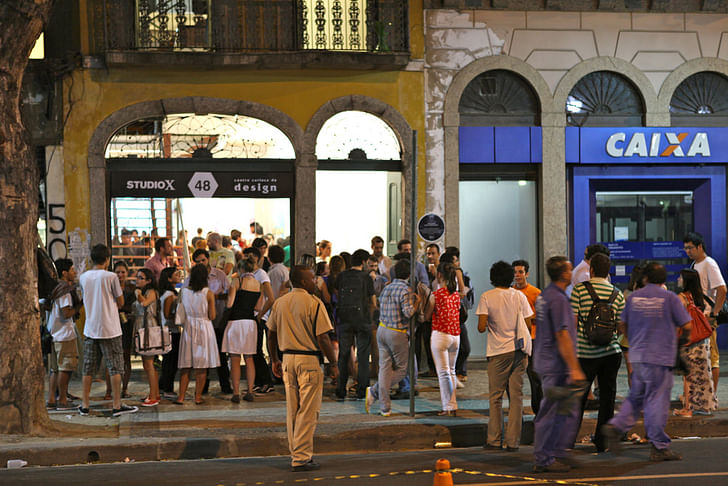
The second five years was really concentrated on developing the global intelligence that you and I have been talking about. Given the incredible expansion of the capacity of the school (like the number of neurons in the brain and the connectivity of all those neurons), how to, as it were, distribute that brain around the world to further enhance its sensitivity and capacity. If the historical strength of Columbia has been to be a nuclear reactor filled with the best brains and the best minds in an incredibly dense space, where they interact for a few years and then explode out into the world -- that is beautiful but inadequate. It’s a kind of I’m not leaving Columbia. I like to think of it as stepping up from being the Dean to being a human being.monastery model on steroids. How to take this model and add a second model which I think is more contemporary for our time, which is that of a distributed, mobile network for a kind of horizontal school, embedded deep into multi-dimensional fabric of cities around the world. So the last five years was devoted to turning this highly concentrated brain into a kind of distributed brain. So this was the main work, the main source of excitement, pleasure and pride, but I really think that what’s exciting is that a new person will arrive, and whatever this was, this major transformation over the last decade, will just seem like foreplay before the real event. And I do think architecture schools can play a leadership role as universities rethink themselves. I don’t mean this as a sense of arrogance -- architecture schools are actually a very small corner of the university -- but precisely because we’re small, and precisely because we cherish synthetic thinking we have an ability to teach the university how to reinvent itself. That maybe is one of the missions of the future school.
The whole school is an organism ready to evolve. Students come here with the expectation that the place will change while they’re there. So if a new Dean arrives who simply thinks everything here is great, then we’re in trouble. It should be somebody who will design or make an image for us of a school even more amazing than we could have ever thought, and that person will invite us to collaborate with her or him on realizing that. And everybody here is ready for that. Living for that. I’m very excited, I love this moment.
What are you going to be doing in Los Angeles and Berlin after “stepping up” from the deanship?
Right now I’m finishing a book. I spent a lot of time in California this semester because I’m finishing a book on Buckminster Fuller and radio, absolutely obsessed with the architecture of invisible signals. But that should finish right about now. My wife, Beatriz Colomina, is going to be a fellow at the American Academy in Berlin, so I’m going to go in her luggage, and I’m really very excited about that. Then she’ll be at the Getty in the spring so I’ll go there as well. So for me it’s going to be a fantastic year in two of my favorite cities, writing and getting ready to being a human being again.
Former Managing Editor and Podcast Co-Producer for Archinect. I write, go to the movies, walk around and listen to the radio. My interests revolve around cognitive urban theory, psycholinguistics and food.Currently freelancing. Be in touch through longhyphen@gmail.com
3 Comments
Another good piece of journalism ATH. Not sure if this interview was before or after the interviews in the Columbia student journal? (:) but it appears the role of architecture school is much more thought out here so I am presuming its after.......in short if I were to summarize Wigley's description of what an architecture school role is and what a university could be - its an open source experimental platform for creatives who find the questions that eventually invent or cause emerging markets and policies that further develop integrated in real time - globally virtually and locally physically....that probably gives big brother and stupidity reduction types major anxiety....
i didn't know that he was married to beatriz colomina
my favorite essay when i was knocking out the Ockman, Nesbit, and Hays theory anthologies on the subway en route to work was the one about Corb wrttien by colomina. in short a review of Corb's ability to manipulate media in theme with his architectural theories...especially the people the magazine was being sold to - bankers who want to be affluent (off the top of my head, the word cup is about to start) - talk about finding clients.
found text on the web - http://www.arch.ttu.edu/courses/2008/summer/mexicostudio/Handouts%20Vernooy/Grad/Grad_Colomina.pdf
Block this user
Are you sure you want to block this user and hide all related comments throughout the site?
Archinect
This is your first comment on Archinect. Your comment will be visible once approved.